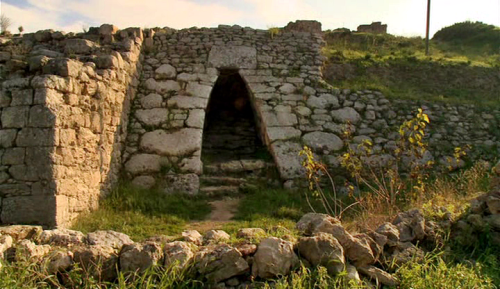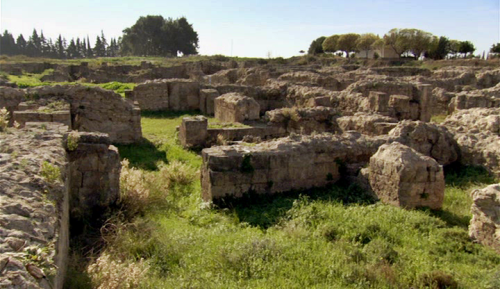#ugarit
http://maritimehistorypodcast.com/ep-019-ugarit-in-flames/
Episode 019 is now up and running! This episode features quite a few letters between Bronze Age rulers of places like Ugarit, Hattusa, and Egypt. What they tell us is that famine, drought, and seaborne invasion all converged during the high point (or low point) of the Late Bronze Age Collapse, between 1230 and 1175 BCE.
Post link
Ancient Worlds - BBC Two
Episode 2 “The Age of Iron”
The ruins of the Royal Palace of Ugarit (picture n. 1: one of the entrances to the palace)
The city-state of Ugarit was one of the great cities of the Bronze Age. The Canaanite sea port city flourished as a trade centre in the 14th century BC but sometime around the 1.190s the city declined and then came to an end. On excavation of the site, several deposits of clay cuneiform tablets in many languages were found. The local alphabetic script that records the native Semiticlanguage called the “Ugaritic” was one of the first proper alphabets.
The Royal palace was the residence of the rulers of Ugarit and a centre of international diplomacy. The palace was built in four major stages between the 15th and 13th century BC. It covered an area of 6.500 square metres and it was surrounded by a fortified wall (dating to the 15th century BC).
The royal architects created a light, airy interior with a series of courtyards, pools and internal gardens. Today only the ground floor remains but there is evidence of several stairways leading upwards, an indication the palace had at least one further floor. The ground floor was the centre of the palace’s business. Here, court officials received visitors and conducted the local and international bureaucratic business. There was a throne room and a very imposing area that was the centre of the palace’s political life: the bureaucratic courtyard. It was here that scribes produced much of Ugarit’s diplomatic correspondence and commercial and political documentation. Archaeologists identified a room used as the palace’s archive and a necropolis underneath the ground floor of the palace, under two rooms in the northern sector. A large interior palace garden was also identified. The area would have been exclusively for the use of the royal family and their intimate guests.
Ugarit, Ras Shamra, Latakia, Syria
Post link





